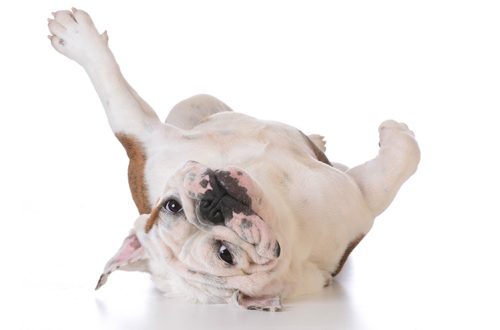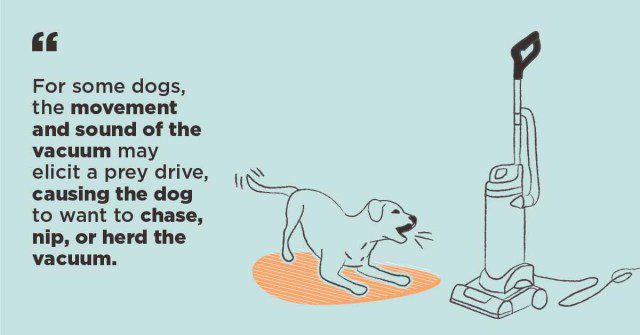
Why are dogs afraid of the vacuum cleaner?
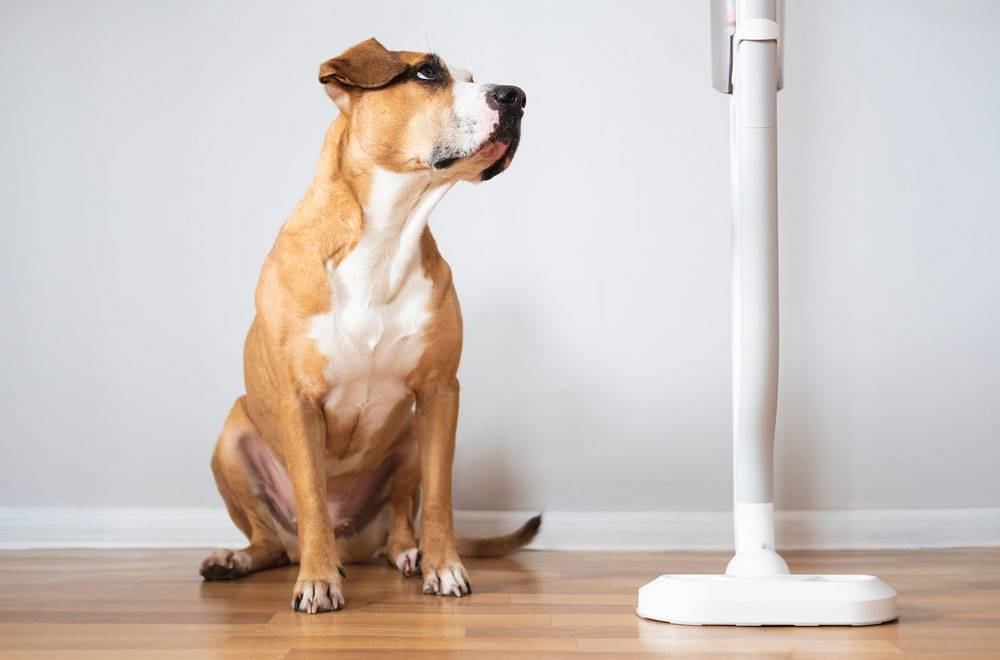
Contents
Reasons why a dog may be afraid of a vacuum cleaner
Most often, when a vacuum cleaner appears, our pets demonstrate behavior caused by fear. For example, they may shiver, hide, bark at the vacuum cleaner, or even try to protect their human from it. There are four main reasons behind the question of why dogs are afraid of the vacuum cleaner in general.
Sound
Vacuum cleaners are very loud. The sound they make can be unpleasant or even painful for our dogs. Even if vacuum cleaners seem noisy to us, dogs, whose hearing is much better than ours, perceive the sound of a vacuum cleaner as even more unpleasant and annoying.
According to scientists, dogs are able to hear sound frequencies at least three times higher than the human ear can perceive. As with thunderstorms, many quadrupeds’ fear of vacuum cleaners may be due to the loud, high-pitched noises the machine makes.
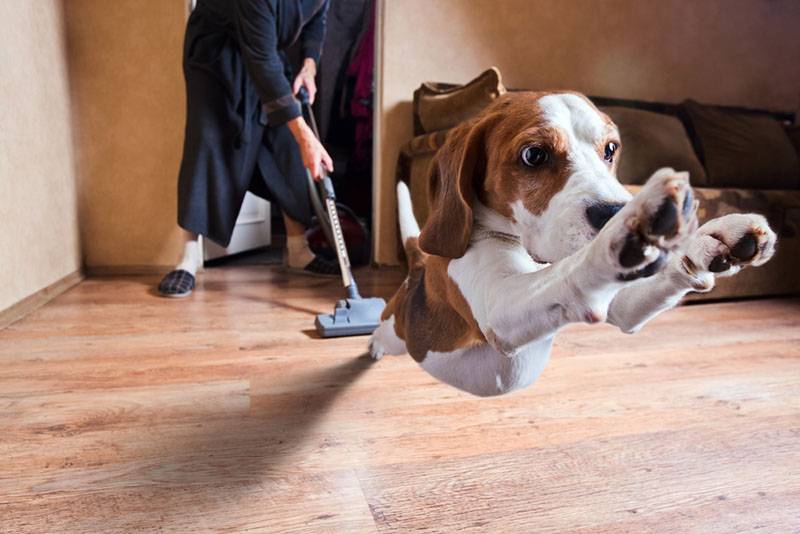
Smell
The sense of smell in dogs is also very strong. While you may not notice it, your vacuum cleaner amplifies many of the off-flavours that your pet may pick up. You can only smell the warm smell of a freshly vacuumed living room, while a four-legged friend smells dust and old particles that have long settled under your sofa. Since dogs rely heavily on their keen sense of smell to perceive the world, it’s easy to understand why they are anxious.
The discomfort
Animals that are already sensitive to sounds or nervous can experience particular discomfort when the house is vacuumed. Some dogs are afraid of the vacuum cleaner because they perceive the device as something following them, or as a possible dangerous intruder invading their home.
Negative experience
Many pets can go into a daze at the sight of vacuum cleaners due to previous negative experiences. Dog owners should never tease or chase their pet with a vacuum cleaner, nor should they allow their children to intimidate the animal with a scary device. This will only exacerbate the dog’s phobia and further hinder your efforts to relieve the animal’s tension.
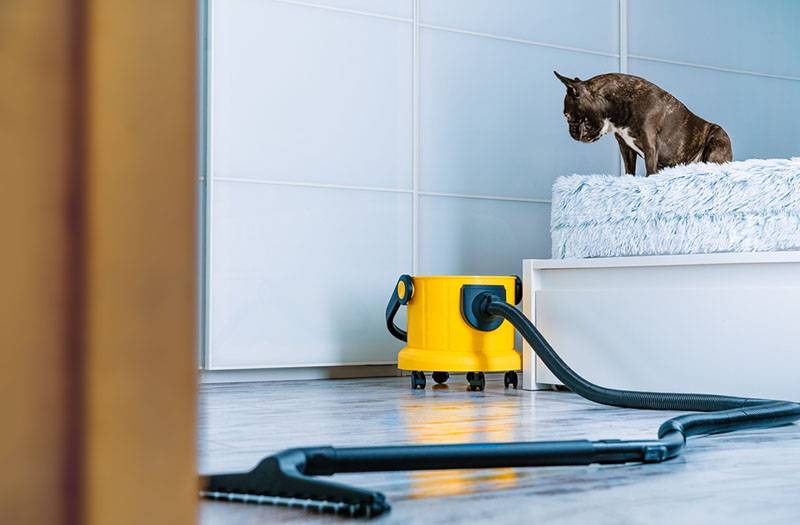
What about the robot vacuum cleaner?
Pet owners are increasingly acquiring robotic vacuum cleaners that can be programmed to clean their home on their own. This is a great way to prevent pet hair from accumulating all over the apartment, but the movement of the vacuum cleaner will be more unpredictable since such robots work automatically. This means that the cleaner could collide with your dog if he doesn’t get out of the way. Such a chaotic moving object can greatly frighten your pet.
For this reason, it is better to keep an eye on the dog while the robot is running. The first acquaintance of the tail with the robot vacuum cleaner should be started in the same way as with any other vacuum cleaner: let the animal explore it in the off state.
Encourage any interaction with the vacuum cleaner. It may also be helpful to let the quadruped observe the object calmly or call the pet to you before the vacuum cleaner approaches him, to help the animal understand when to move out of the way.
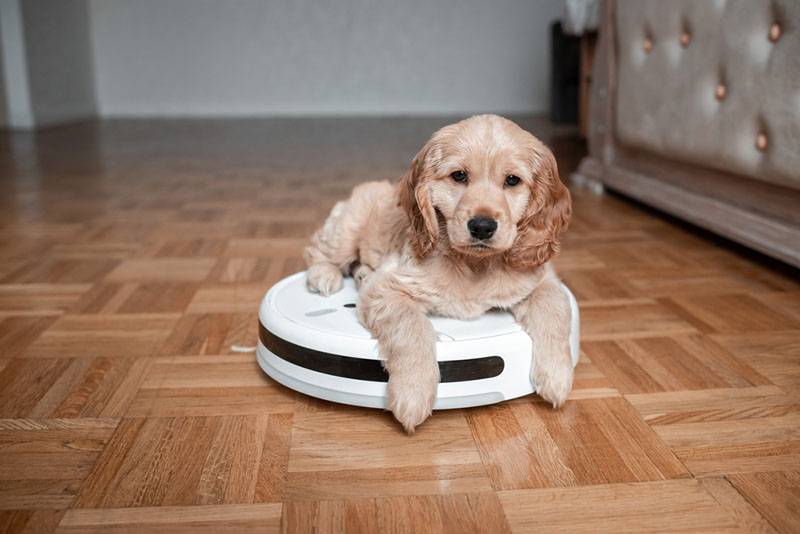
How to wean a dog from being afraid of a vacuum cleaner?
Approach the acquaintance of your animal with a vacuum cleaner consistently. If you have a puppy, start classes at an early age. The process will be easier if a friend or family member helps you either handle the dog or move the vacuum cleaner. This will help you avoid cleaning problems in the future.
Step 1: Turn off the vacuum cleaner
Take the vacuum cleaner into the room, but do not turn it on. Allow the dog to explore the object, but do not force things and do not force him to approach the “enemy”. Praise and reward your pet with treats when he begins to show interest in or explore an item, starting with a simple glance from across the room.
Step 2: Moving the Vacuum Cleaner
Next, you need to accustom the dog to the idea that the vacuum cleaner can move. Start moving the vacuum cleaner around the room without turning it on, and at the same time treat the tail of a treat from a convenient distance for him. For some, a comfortable distance may be the other end of the apartment, for others it may just be another part of the room. Praise and encourage your dog.
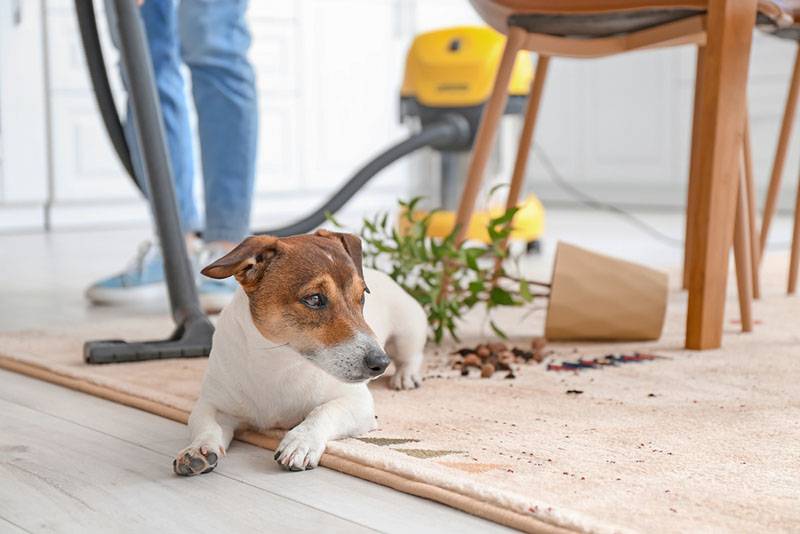
Step 3: Turn on the vacuum cleaner
When your four-legged friend begins to calmly react to the switched off vacuum cleaner, you can try to turn on the device. First, make sure your dog is at a comfortable distance and prepare plenty of treats. When the vacuum is turned on, praise the animal and offer treats every time your companion calmly looks in the direction of the object.
Stock up on patience
Work at your dog’s pace to create comfort around the learning process. If your furry starts barking, running away, lashing out, or showing any other stress-related unwanted reactions, then you’re overdoing it a bit and need to take a break.
Go back to a distance where your dog is comfortable and can work successfully during the next training session. If you’re having trouble, don’t be afraid to ask a professional trainer for help.
August 1 2022
Updated: August 1, 2022




